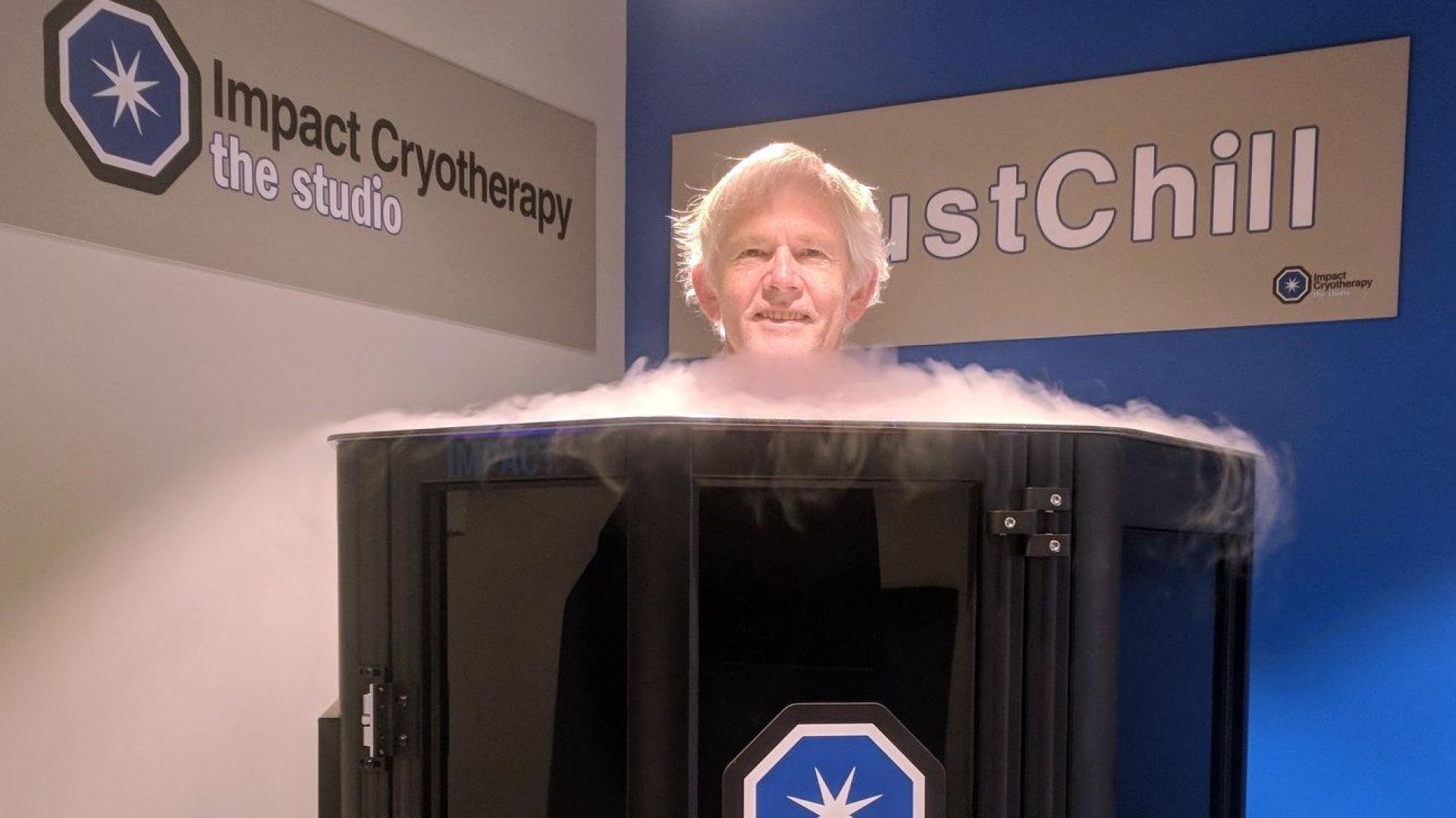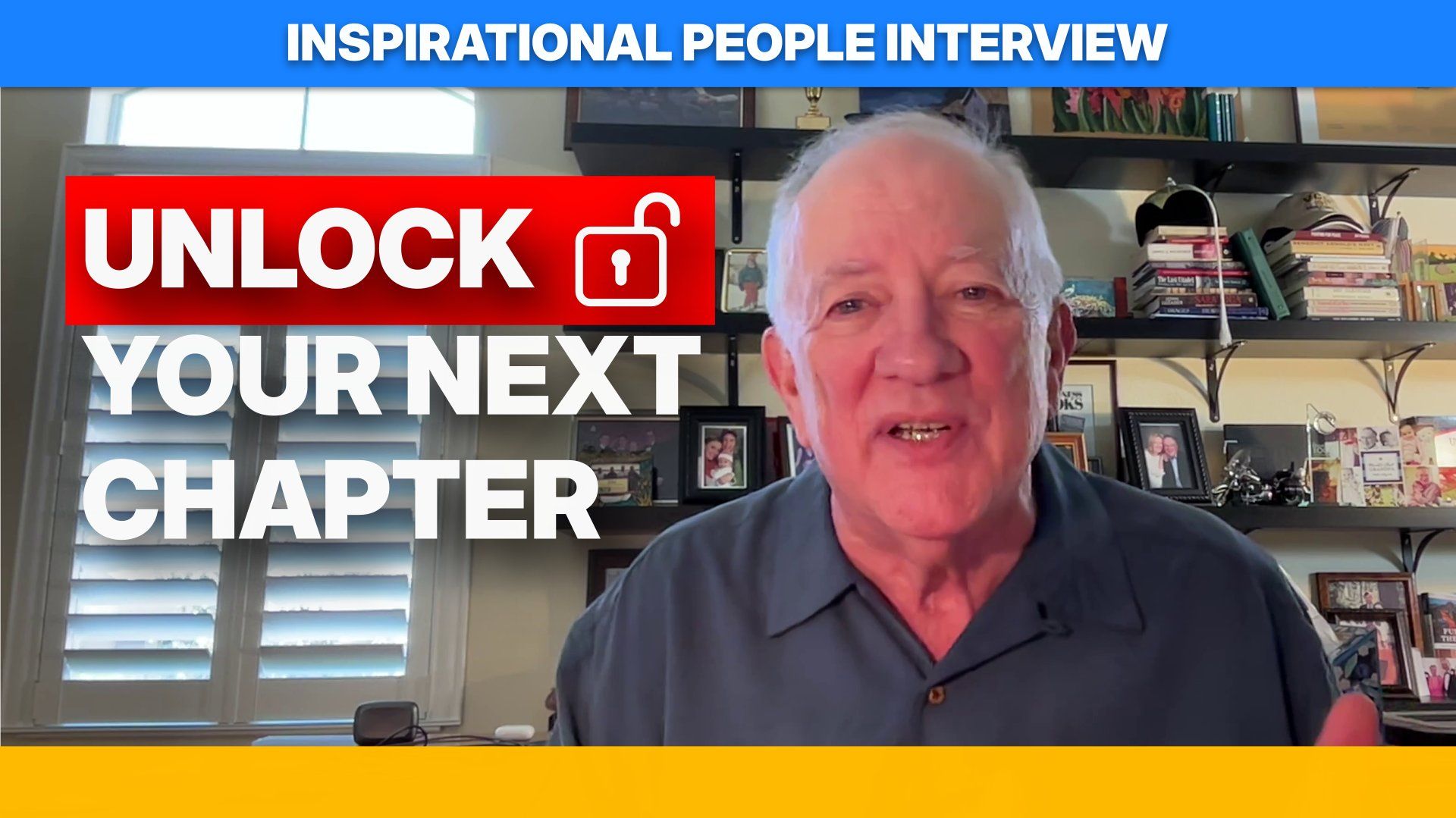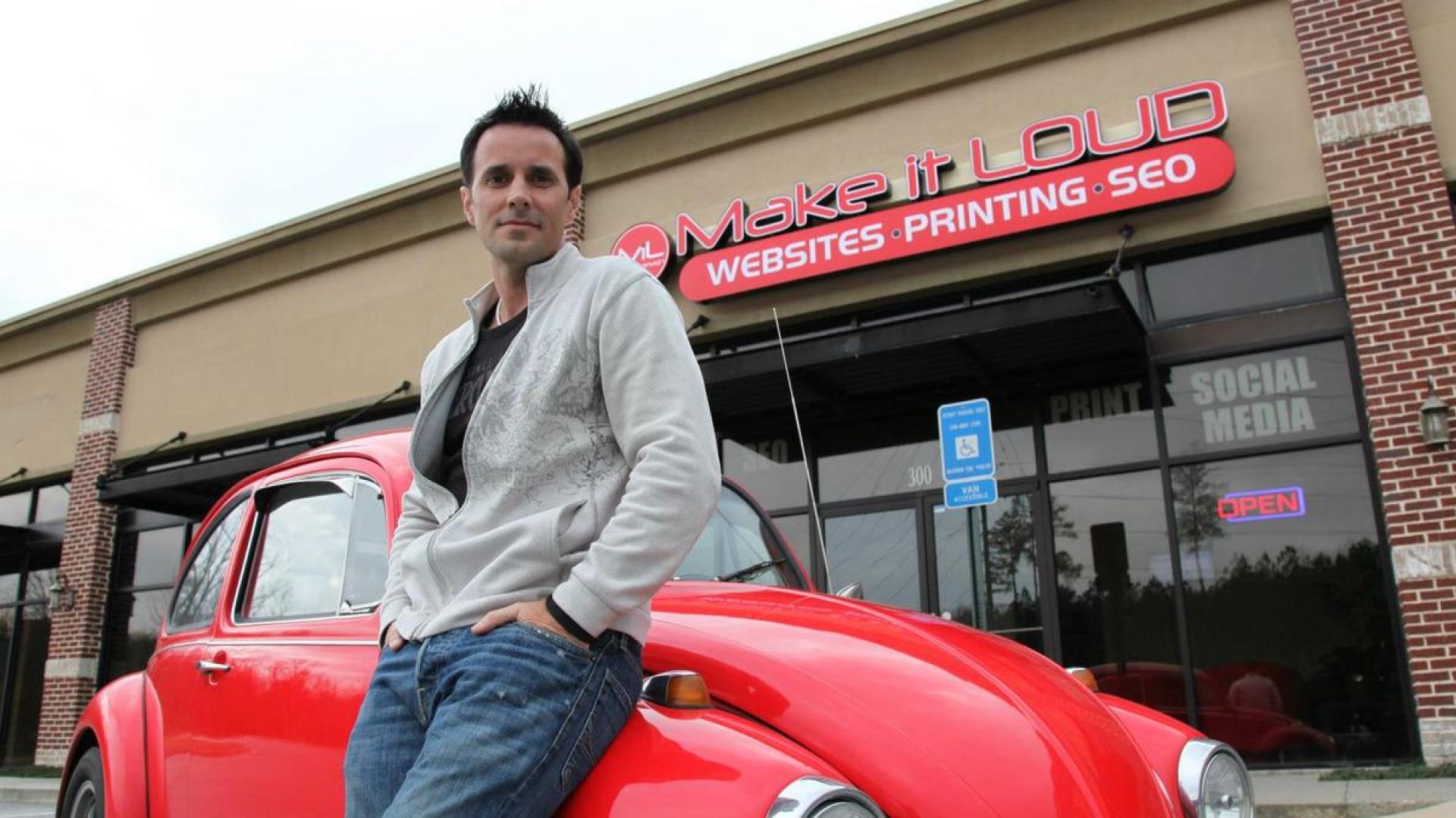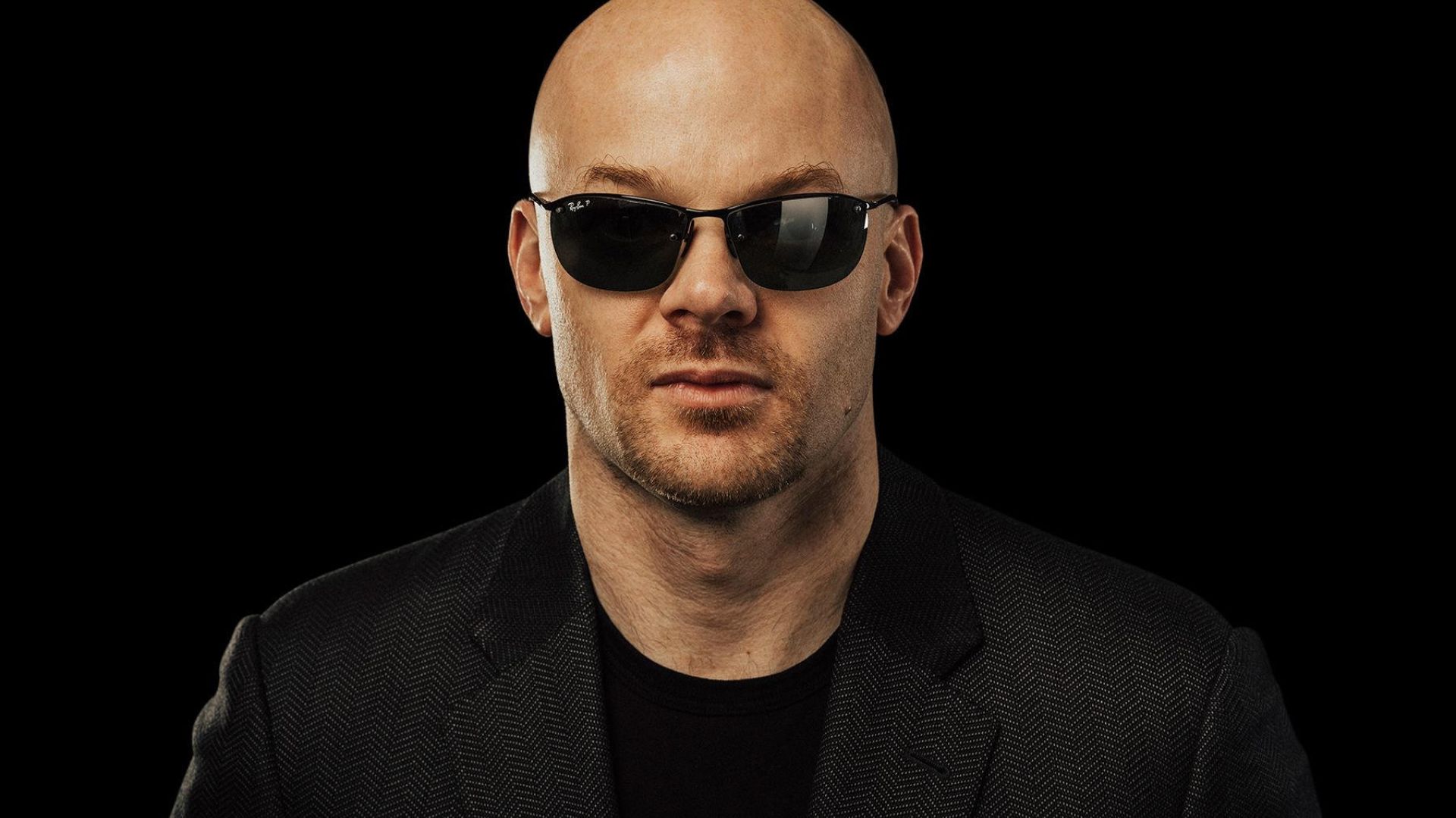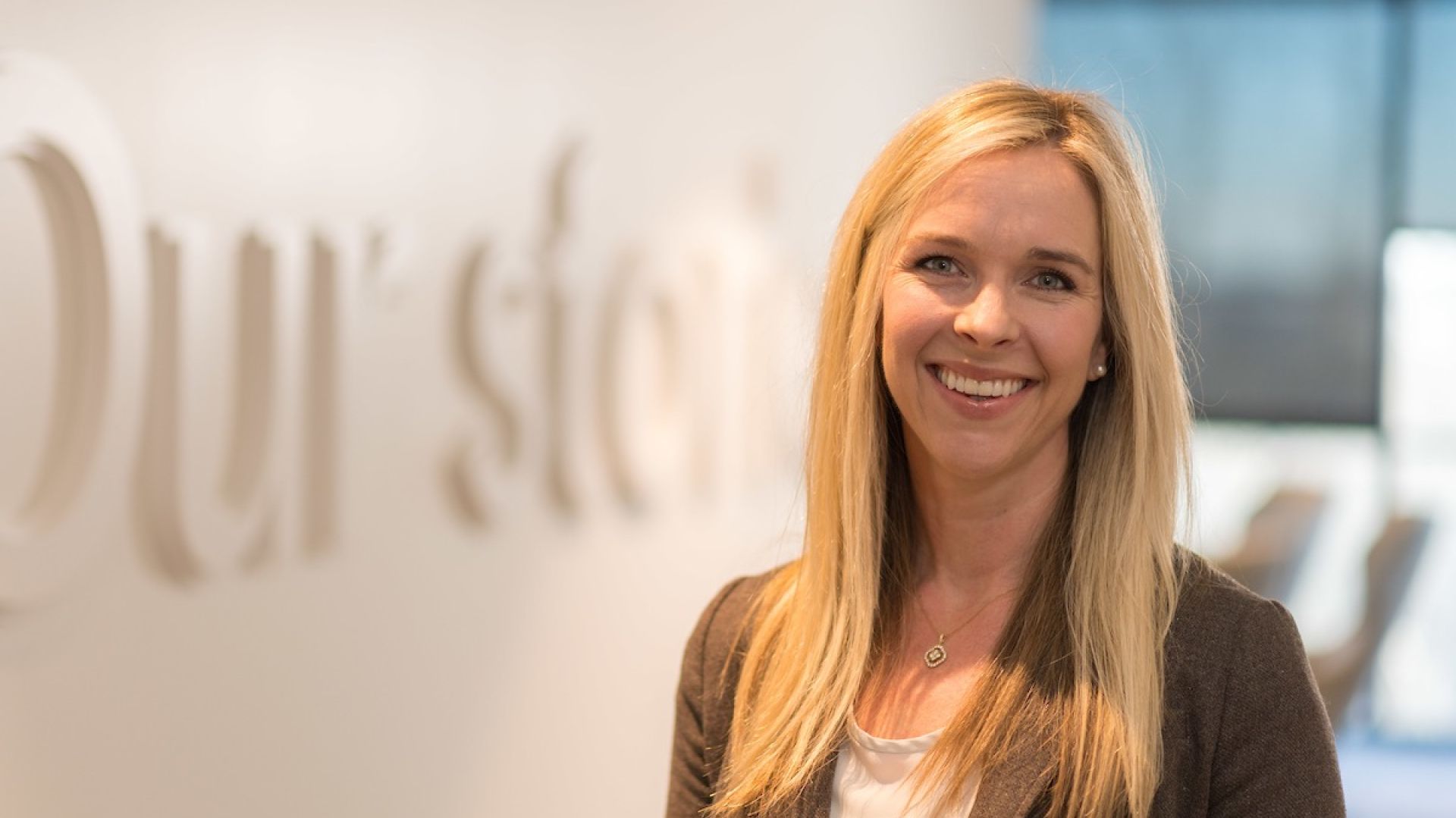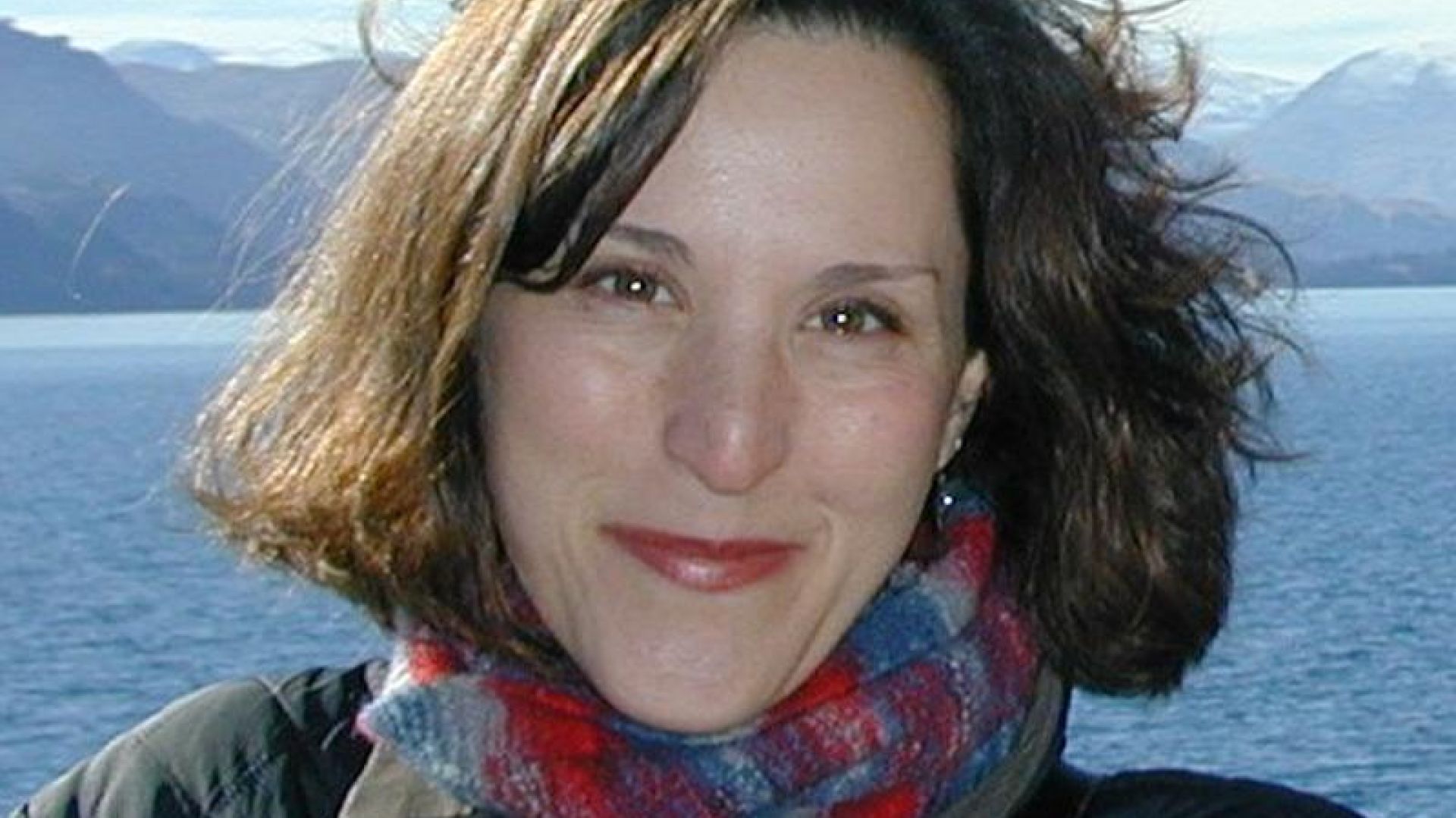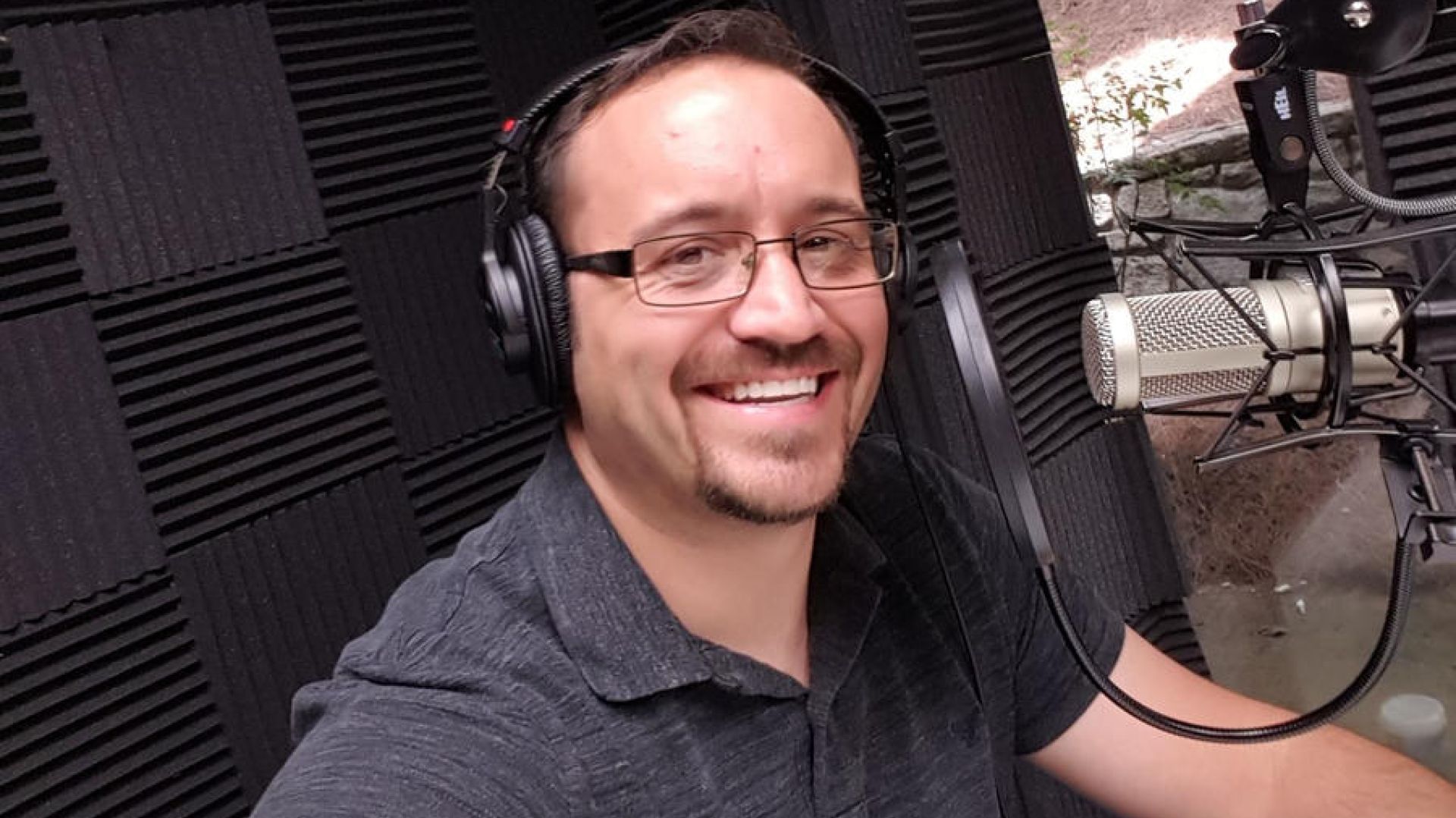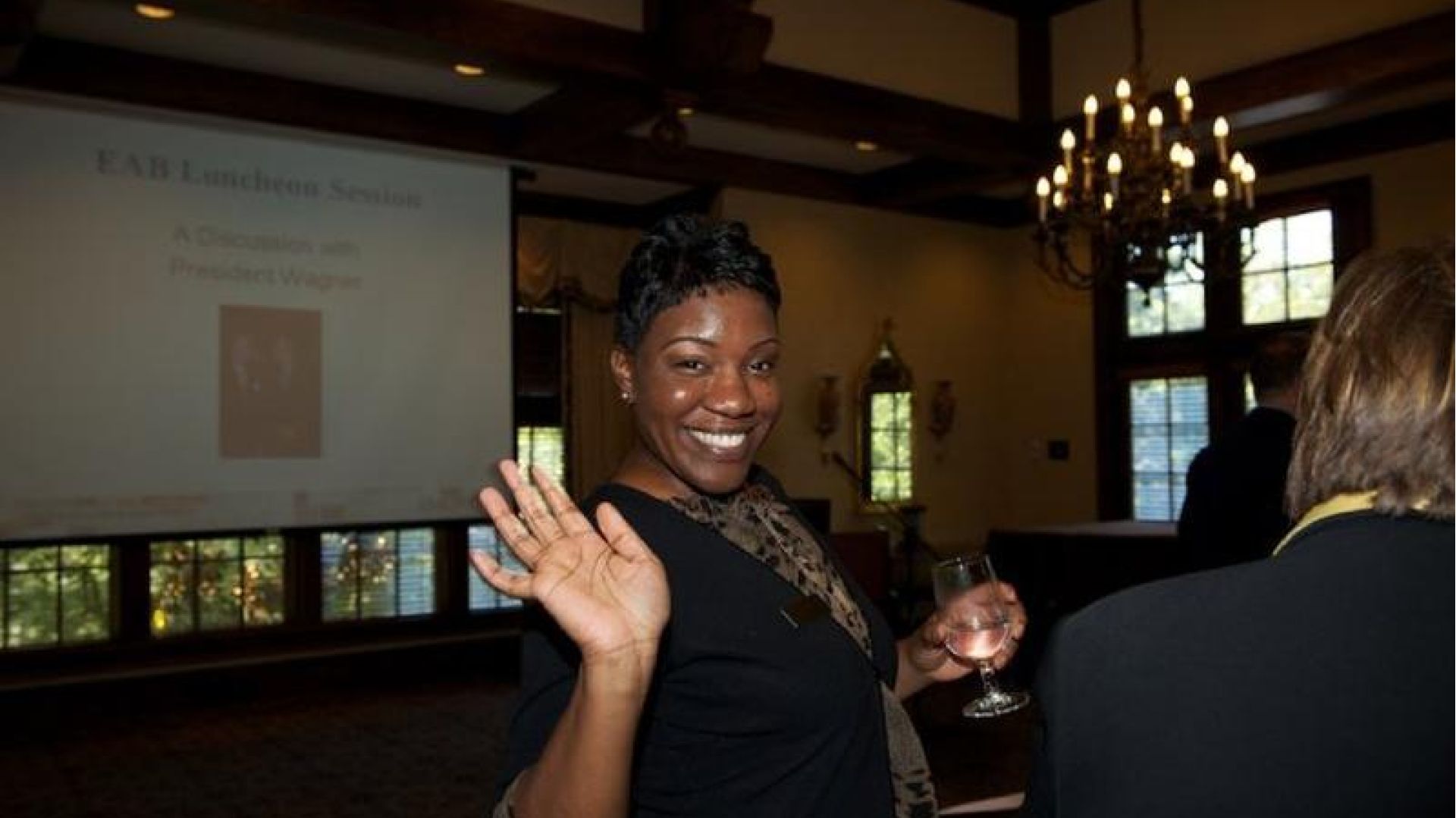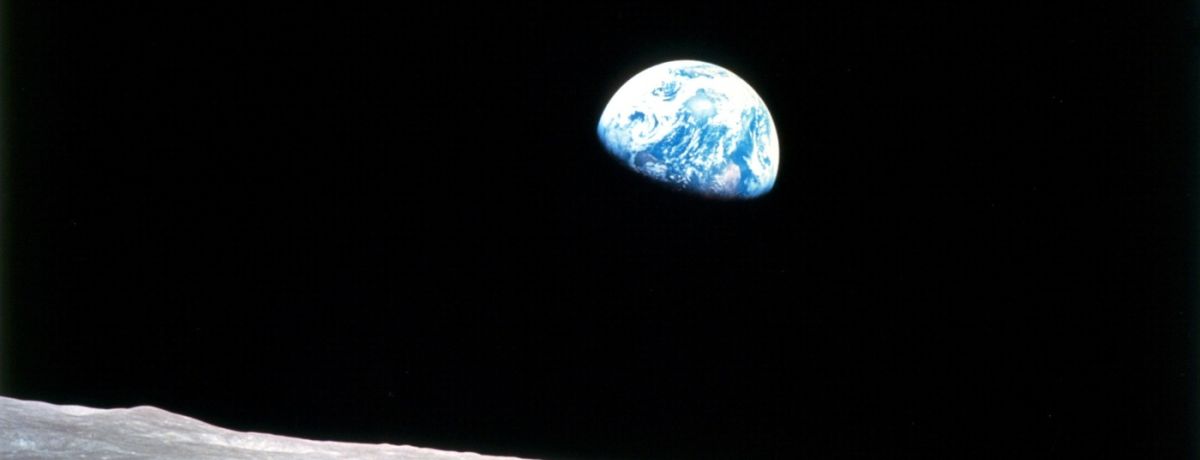
How NASA Became the #1 Best Place To Work And Other Leadership Lessons With Brady Pyle
Imagine your boss gives you a new target.
Over the next 5 years, you need to reduce costs by 25%.

For the leaders at NASA, this wasn't a drill. It was a reality that sparked "a lot of frustration in the system." It felt like a loss of control. It was a "typical grieving process."
What do you do? How do you lead when your hands are tied and your buying power is reduced?
For 30 years, Brady Pyle navigated these exact challenges inside NASA. In this Inspirational People interview on the Share Life podcast, he shares what it’s like to lead through massive change.
You will learn:
- The surprising reason NASA pushed to get people back on-site after the pandemic. It wasn't about productivity, but a concern that "we might be missing some serious safety issues."
- How they became the "best place to work in government for 12 straight years" by doing a few specific things any organization can do.
- The one thing his mentor told him that changed how he balanced his work and family life during a critical project.
How do you make the tough cuts without losing the mission? Find out in this inspirational people interview.

P.S. Brady asks every leader: Who is on your 'Mount Rushmore of mentors?' If you feel like you're figuring it all out alone, this conversation will show you why you don't have to.
- Watch: Click here to watch this discussion on YouTube directly, or click play on the embedded video below to begin streaming the interview. Click here to subscribe to my YouTube channel.
- Listen: Click here to listen on Spotify directly, or click play below to immediately begin streaming. You can also find this discussion on Pocket Casts, iTunes, Spotify, and wherever you listen to podcasts under the name Share Life: Systems and Stories to Live Better & Work Smarter or Jason Scott Montoya.
Connect With Brady Pyle
- Connect with Brady | Website - LinkedIn
- Get Brady's Book >>> Amazon >>> Out of This World Leadership: Living the Fruit of the Spirit to Lead Well
Additional Resources
- Experiencing God by Henry and Richard Blackaby
- The 360 Degree Leader by John C. Maxwell
- Leadership Gold by John C. Maxwell
Podcast Episode Transcript
Brady Pyle (00:00) Our target in HR was, over five years, we needed to reduce costs and expense. We reduced a top-line budget by 25 percent over those five years. Jason Montoya (00:09) Welcome to an inspirational people interview on the Share Life podcast. I'm Jason Scott Montoya, and today I'm here with Brady Pyle. Brady, say hello. Brady Pyle (00:58) Jason, good to be here with you. Jason Montoya (01:05) Brady has spent 30 years in HR at NASA, where he was the first-ever leader of the other HR field center executives for the agency. Today, he brings lessons from NASA to a different context as Chief Human Resources and Inclusion Officer, or CHIRIO for short, at Space Center Houston, a nonprofit science learning center and the official visitor center for NASA's Johnson Space Center, hosting 1.3 million guests per year. And according to Brady, he cannot get onto NASA premises without going through their tram system, so they're the gatekeepers of the Houston NASA location. Since 2013, Brady has blogged at outofthisworldleadership.com, featuring over 350 book summaries and his own recently published book. He is a prolific writer, a prolific reader, and has a lot of insights to share with us today. Start with your story, Brady. Who are you and where'd you come from? Brady Pyle (02:05) I grew up in Corpus Christi, Texas. When I was in the ninth grade, I felt a calling to government service. My dad and grandfather both were public servants who had worked at the Corpus Christi Army Depot. My brother went to school at Texas A&M University and played baseball there, and I learned that Texas A&M was one of the few schools that had cooperative education program opportunities for non-engineering students. So I was very excited about being part of that. I studied public administration and started my sophomore year seeking an opportunity for a co-op assignment. I worked with the Department of Health and Human Services in their Dallas personnel office and then in Washington, D.C. That's where I learned that I really didn't want to live and work in Washington, D.C., even though that had been a dream growing up. I focused on HR, ended up getting a grad degree in human resources, and that's where I joined NASA as a graduate co-op student in 1995. I grew up in the system, working for about 10 years as an internal HR consultant. What was unique about NASA at the time is that all of your customers were there on-site, so it's very much a campus environment at the Johnson Space Center, and you're able to consult with them directly. Many other HR jobs in the government focus on multi-state regions and are more remote or virtual. I worked through the system and held progressively more responsible leadership roles, becoming the HR Director at the Johnson Space Center in 2016. After I held that role for three years, NASA decided to change its 60-year management model. Instead of reporting to the local field center directors, all the functional executives would report up through their function. So in 2018, my role became the Director of HR Services for NASA, and I became the supervisor of the field HR executives. It was a tough change. You can imagine after 60 years, the center directors were losing a bit of control, so there was a lot of frustration. My role was to work with those leaders and my HR team to make sure we worked through that transition successfully. I was in that role for a few years and then became the Deputy Chief Human Capital Officer at NASA in January of 2020. My first 90 days were very interesting because the pandemic hit. A lot of changes had to be made. I was in that role for a few years when my boss, the Chief Human Capital Officer, was retiring. I was at a career crossroads and decided to take early retirement from NASA and then landed over here, as you mentioned, at Space Center Houston, which is a nonprofit of about 450 employees. It's a fun place to be because there are always excited kids and guests down on the floor. Jason Montoya (05:29) Let's tease that out a little bit. You mentioned a dramatic cultural and organizational change, which is a huge deal. What was the catalyst for that change? Did the old system work for a while and then it just got too big? Brady Pyle (05:37) Great question, Jason. In 2018, NASA was looking at a future of flat budgets. Flat budgets mean you're absorbing inflation, which is tough to manage, and from a space flight program perspective, your buying power is reduced. As they looked at the overall system, they said, "Hey, we could probably save money in how we operate all of our support functions: HR, finance, procurement, facilities." So if we manage those functionally with a strategy of cost reduction, that will help us maintain plans for the mission. Our target in HR was to reduce costs and expense by 25 percent over five years, from 2018 to when I left in '23. We reduced a top-line budget by 25 percent over those five years. Jason Montoya (06:46) Okay. So you were successful at the mission. Brady Pyle (06:59) Yeah, we kept the HR support for the mission and returned money to the mission. That was really the goal. Jason Montoya (07:09) You mentioned people felt like they lost control. How did that feeling compare to the reality? And how did this pivot actually change the organization's effectiveness, not just in cost-cutting but in what it did? Brady Pyle (07:31) The loss of local leader control was very real. What I tried to do to help mitigate that is I would meet regularly with them and seek to understand their priorities and how we could best support them. But the fact of the matter is the model was shifting from a locally optimized model to an agency-optimized model. An agency-optimized model isn't going to make the same choices or have the same priorities as every local model, and that's part of the reason the previous model cost more and took more resources. It took a lot of conversations and relationship-building to work through that together as an overall agency. Jason Montoya (08:23) Once you got through it, how did those people feel about the new paradigm? Brady Pyle (08:30) I think it was a typical grieving process where you ultimately get to acceptance. It took us a few years to work through that. In our early days, there was a lot of resistance and a lot of thought that maybe upper management would change and we'd go back to the previous model. But we had a couple of senior leader changes over that time, and they looked at the model and said, "No, we need to keep this going." I think people realized this was sticking and we had to figure out how to make it work. It was a natural grieving process. Jason Montoya (09:21) So there was something that they lost. Was there anything they gained in the new model that they came to appreciate later on? Brady Pyle (09:30) We went to more of a shared services model for our hiring and staffing. That was painful up front because you went from staffers that had local knowledge and expertise and pooled that team together. But what we found overall is that we were able to deliver that service more efficiently and effectively as a pool of resources. Some of the centers that were more heavily resourced saw a slight degradation in service, but on average, the service was improved for the whole agency. Jason Montoya (10:16) What type of mission or goal would lead to going back to the old model? Brady Pyle (10:25) Well, you would be making the decision that you're going to spend more resources and optimize again locally. If you made that decision, you would be making the trade that local optimization is more important and you're okay with that level of investment. Jason Montoya (10:48) I'm wondering what scenario would justify that. I could even imagine a scenario where you have your agency model but then maybe you have a localized silo to accomplish a particular mission or objective. What do you think? Brady Pyle (11:05) Actually, Jason, you're describing a lot of the strategy we took. We pulled together some services, like staffing and hiring, but at the same time, we stood up internal consulting roles. A couple of our centers had HR business partner models, but not everyone did, so we set that up for every local organization. You're going to have an HR business partner who serves as your internal consultant and the liaison back to the shared services. We did a blended model where you had your local support and then relied more heavily on the pooled resources. Jason Montoya (11:46) Now talk to us about what it was like in the pandemic. Brady Pyle (11:58) What was interesting is, I mentioned that I lived and worked in Houston, and for a lot of my meetings up until the pandemic, I was remote, but most of the other people were in a room. It was pretty clunky, to be honest; I would catch 70 to 80% of what was said. The pandemic forced us all to be in this virtual environment and improved my life quite a bit because I could engage a little bit differently with everyone. For NASA in general, it was a hard shift moving to a virtual environment for a period of time. One of the last meetings I was in at NASA, they were reviewing a robotic project that had been delayed a little bit. One of the panel members reviewing the project expressed a concern. He said that in a lot of cases at NASA, engineers will get together informally in the hallway and share things, like, "Hey, this doesn't feel quite right," or, "I'm concerned about this issue with the project," but they won't do that when formal meetings are scheduled. What was lost in the remote environment were some of those conversations. There was a lot of concern at NASA at the time, particularly for human spaceflight, that we might be missing some serious safety concerns. I know NASA has had a big push the last couple of years to get people back on site, and that's primarily why. Now, support functions like HR have been a little bit more in the remote model because they're supporting customers from across the agency. Jason Montoya (14:06) Just to clarify, what part of the government does NASA fall under? What's the hierarchy? Brady Pyle (14:18) It's an independent federal agency, so the president appoints an administrator that heads NASA. The president proposes a budget and priorities each year, and then Congress will debate that. That's one of the things that's a little bit tricky. If you think about agencies like the CIA, the CIA has a 10-year budget and a 10-year administrator, so they tend to have more continuity. From a business perspective, that would make more sense for NASA because a lot of the programs are longer-term. When you have a turnover of presidential administration, a lot of times there's a change in priority and a shift in budgets, and that's hard when you're working on a 20- to 30-year development program. Jason Montoya (15:15) So what you're saying is every new president brings a new NASA administration. Brady Pyle (15:25) Yes, they appoint their leader of NASA. So when Trump came in, he had someone scheduled to be appointed and then withdrew that name, so right now there's not an appointee. Internal leaders, actually the former center directors at the Kennedy Space Center in Florida and the Johnson Space Center here in Houston, are holding down the first and second positions of leadership. They're in an acting capacity, but they're carrying out the budget priorities of the administration right now. Jason Montoya (16:13) As a federal agency, I imagine there's a level of scrutiny or pressure that you feel. Is that the case, or are you pretty shielded from it when you're inside the organization? Brady Pyle (16:32) Actually, NASA has a pretty strong, positive brand with the public, so generally there's a lot of public support for NASA and what it does. Most people don't know what all NASA is doing, but they have a positive feeling about the organization. The other thing I should point out is that NASA is a civilian agency, so we're not part of the Department of Defense. In Trump's first term, he broke out the U.S. Space Force as a separate defense entity. It used to be under the Air Force. Sometimes the Space Force may work on projects with NASA, but NASA is a civilian agency, and that's what has allowed NASA over the years to do unique partnerships with Russia, for example. Even during the Cold War, we had the Apollo-Soyuz program, and we've partnered with Russians on the civilian side of space. Jason Montoya (17:34) What were the reasons for that? What was the value of partnering with our enemies in that way? Brady Pyle (17:46) Well, there's a lot of benefit from different approaches, different ideas, and working together in service of exploration goals. It's very unique that our countries are able to live and work together on board the International Space Station. There was a little tension when Russia invaded Ukraine, but the astronauts and cosmonauts have built such bonds and relationships that it did not impede their work together. Jason Montoya (18:31) What's something about NASA you'd want the general public to know that they might not, but would appreciate? Brady Pyle (18:45) I'm proud to say, Jason, we were named the best place to work in government for 12 straight years. But it wasn't always that way. You might think, "Of course, NASA is going to be the best place to work," but from an HR team perspective, there were a lot of specific things we did to push us in that direction. One was we started paying attention to the regular employee engagement surveys that are done each year and then focused on a couple of improvements to make. The types of things that we did there are the types of things that any organization can do. And I'm proud to say that in the last two years at Space Center Houston, we've taken some of those same approaches and improved our employee engagement as well. But it is a great place to work. It's got a great mission and purpose, but it's still a workplace of people, so you've got to do some intentional things to make it a great place to work. Jason Montoya (19:48) So you shifted from NASA to the non-profit Space Center. You're independent of the federal agency now, so is it funded just by donors? Brady Pyle (20:10) Most of our funding comes from tickets at the gate, about 80%. Then we have some donors, memberships, and sponsorships from businesses. We also have some education programs. Students can come to summer camps, for example, and we've got some adult education programs as well. That all pulls together and makes up our revenue base. Jason Montoya (20:44) What would you say is the biggest difference between an agency that's part of a government, which will last as long as the government wants it to, versus a business where you have to meet the bottom line and be profitable? Brady Pyle (20:57) First, I just have to say, moving from NASA to Space Center Houston, the freedom from an HR perspective of not having federal regulations and rules is just incredible. When I got here, I did a listening tour for my first three months to see what the areas of focus were. There was a lot of consternation at the time about our support for mental health and wellness and our time off policies. We had a traditional vacation and sick time off policy. So we pulled together a team of employees from across the organization to look at the policies, and they came up with a proposal for paid time off. It combined vacation and sick time and also offered support for mental health and wellness days because people were stuck. If they needed a mental health day, they weren't really sick, but it wasn't really a vacation. Paid time off gives a little more flexibility and freedom. The beauty of it is we weren't constrained by government rules and systems; we could do what makes sense. We've also changed our pay structure. I wanted to make sure we had a transparent system for pay, and we're developing career paths. What I'm loving over here—I've told people it feels a little bit like a sandbox because you can do what you want and do what makes sense to support the organization's success. To your point about being in an environment where you need positive revenue, I've joined the organization at a time when we're growing. We've had net revenues the last several years, and we're actually piling those revenues up for future capital improvements. Our signature display out front is the shuttle carrier aircraft, a big Boeing 747 with a model of the space shuttle sitting on top, just as it flew back in the shuttle days. That's outside in the elements, so we're working right now on an expansion campaign that would hopefully cover that in the future and provide a greater guest experience. Jason Montoya (23:41) Let's dive into your wisdom and perspective. When you think about living better, what does that mean to you? Brady Pyle (23:50) Living better for me is making sure I'm in a good place spiritually. Where's my relationship with Jesus? How am I doing there? When I'm at peace and my relationship is strong there, I show up as a better person, and that impacts my other relationships as well. Jason Montoya (24:13) Is your faith something you've had your whole life, or was there a big change in the middle of it? Brady Pyle (24:23) I grew up in a family that went to church and had faith conversations regularly. I made the decision to follow Christ at a very young age, at age seven, and have been on that journey ever since. Faith is very important to me, and very important to my wife, kids, and family as well. Jason Montoya (24:50) You read a lot of books. Do you read much in the Christian arena? Brady Pyle (24:57) Yeah, I read a mix. I'll read HR and leadership books, Christian leadership books, and also books that help me be a better husband or father. Jason Montoya (25:12) What are some of your top books? Brady Pyle (25:14) On the Christian side, right now I'm doing a study again on Experiencing God by the Blackabys, which is a powerful reminder of how God speaks and works. I'm also big on John Maxwell's stuff. His is more business-focused. The 360 Degree Leader was a formative book for me. When I read it, I had strong relationships with my boss and my team, but it really pointed to the need for peer relationships. That was critical learning right before I became a leader of peers. His book Leadership Gold is also great. Jason Montoya (26:13) All of which you probably have commentaries on. Brady Pyle (26:17) There are on my website. There's a link directly to general leadership books or to Christian leadership books, and a lot of those summaries are out there. Jason Montoya (26:28) That's cool. Now, let's talk about the work side. What does it mean to work smarter? Brady Pyle (26:33) Working smarter for me is about being intentional about how I'm spending my time. I have lived over the years by a calendar, making sure it reflects my priorities. What I've found here at Space Center Houston, moving from the NASA job where it was virtual meetings eight to four or five each day with very little margin, is that I've got more margin and more time. For me, it's very important to build in seasons of personal retreat and reflection to reflect on goals and where I am, so I try to do that once a quarter. I actually keep a balanced scorecard for myself that shows how I'm doing at work and also in my roles as a husband and father, in church, and other places I serve. It's a way to reflect on those goals and progress. Jason Montoya (27:43) You've talked a little bit about mentorship. What's the importance of mentorship, and how has that played a role in your journey? Brady Pyle (27:53) Yeah, mentoring is huge. That's one of the big tips that I have for leaders: get a mentor. In fact, I usually ask leaders when I'm in front of them, "Who's on your Mount Rushmore of mentors?" Can you quickly identify four people who have shaped you and your leadership philosophy? One pivotal story for me: About 20 years ago, after the shuttle Columbia accident in 2004, we were doing a lot of hiring in our engineering area to get the shuttle to return to flight. I had kids at the time that were four and two. I would work my workday, go home, have dinner with the family, help put the kids to bed, and then I would go back in and do some work. A mentor told me, "Hey, at this life stage, it's easy to focus on the kids and your role as a father, but make sure you're nurturing your relationship with your wife, too." I had a conversation with my wife and made some adjustments. Having someone who had been on the journey and was able to offer that perspective was crucial; it probably wouldn't have occurred to me otherwise. Jason Montoya (29:29) He pointed it out, but you were also receptive to it, so that was a double-edged benefit. From the position of you mentoring others, is that something you've intentionally explored, or has it happened organically? Brady Pyle (29:36) With my team members, I'm very intentional about providing mentoring and perspective. Being in HR, having a mentoring program is also really important to us as an organization. When I was at NASA, we actually branded the program at one point, "YODA: Your Opportunity to Develop Another," and Lucasfilm gave us a special Yoda pin. We did it for a couple of cycles and then learned the research really points to mentoring being most effective when it's two-way. So we had to move away from the YODA branding because that infers the more senior person. Over the years, we've intentionally had more opportunities for reverse mentoring and two-way mentoring. At Space Center Houston right now, I'm in a reverse mentoring relationship where I'm meeting with a very junior employee. We're having conversations about our communications, some of our HR plans, and her perspective on how we can make the organization better going forward. Jason Montoya (31:00) That's a really important dynamic because despite someone's seniority or even experience, we all have something to contribute. Brady Pyle (31:14) For sure. They'll have a point of view and a perspective that needs to be heard and understood. Jason Montoya (31:21) That helps to have a more complete picture of the situation. Let's talk about stories and narratives. How have real or fictional stories and narratives shaped you as a person? Brady Pyle (31:33) I would say I was shaped heavily by the influences I had from my grandfather and father. Their core values, though they never expressed them, they lived them: values of integrity (to do what you say), excellence (to do your best), and improvement (to get better over time). And those have certainly stuck with me. A story in particular with my dad: growing up, we would do yard work together. When I was in high school, I actually had a small yard business that gave me spending money and helped me build up a little bit of savings for college. Dad would actually help me do the yards, and the thing that stuck with me is he had a saying: "If you can't find time to do it right, how will you find time to do it over?" Are you doing your work with excellence? Are you doing your best? I've done the same thing with my kids. You don't know if that ever sticks, but I tell some of that story in my book, and my son, as he read it, said, "Now I understand why you always talked about doing your work with excellence." So hopefully, over time, some of those seeds will sprout. Jason Montoya (32:54) You've read a lot of books. Do you read any fiction or just nonfiction? Brady Pyle (33:04) I'm primarily a nonfiction guy. I like leadership books and some biographies, but it's mostly leadership books or Christian books. Jason Montoya (33:17) Okay, so do you have a fictional outlet like movies or shows, or do you just steer away from fiction generally? Brady Pyle (33:24) I am a Star Wars fan, mostly Darth Vader. I like the Darth Vader persona, particularly from an HR perspective. So I have a little Darth Vader helmet on my desk and different things. In that YODA mentoring program, I used to dress as Darth Vader. We would dress as characters for the kickoff and closing events. I also like watching fiction with the kids as they grew up. Even now, my youngest just graduated high school, so we're entering a different stage. Jason Montoya (34:02) Let's talk about systems. How do you think about and use systems in your work and life? Brady Pyle (34:19) That's a great question. I have grown up in systems because NASA is all about systems and processes. When I got to Space Center Houston, there were very few systems and processes set up. There were a lot of organizational practices that had just been passed down from leader to leader. What we're finding here as we're growing is that the importance of standard operating procedures, policies, and systems is becoming critical. Particularly from a cultural perspective, if we're trying to intentionally drive a culture of inclusion and innovation, how do the systems and structures support that? We're paying a lot of attention to that at work. On a personal perspective, I mentioned the balanced scorecard. I use different systems myself to manage my time and life and make sure my priorities and how I'm spending my time line up. Jason Montoya (35:43) When does a system become tyrannical? Brady Pyle (35:47) I think when you're not willing to make adjustments to it that make sense. When we write policies, processes, and systems, I always think of them as living documents that need to adjust or change. As either circumstances, technology, or even as players change, you've got to be able to respond. I think systems can frustrate people and the overall organization if you're married to a particular process that no longer makes sense. You've constantly got to be in a learning mode and making those adjustments. Jason Montoya (36:43) What causes someone to become a lifelong learner, always trying to improve, versus being more static and set in their ways? Brady Pyle (36:58) That's a great question. On StrengthsFinder, my top strength is Learner. I mentioned earlier the core values passed on to me about improvement and getting better over time. Those things are very natural for me in just how I'm wired. But I definitely try to encourage that mindset on the team. We need to be a learning organization. We need to be out there understanding the trends and what's going on, and then be willing to adjust our systems and processes accordingly. I think part of it is leadership expectation, and part of it is training, new knowledge, and continuing to emphasize those things. Jason Montoya (37:46) So what are your top five from StrengthsFinder? Brady Pyle (37:51) Learner, Relator, Belief, Analytical, and Responsibility are my top five. Jason Montoya (38:00) Okay. I've got Futuristic, Context, Ideation, Connectedness, and Strategic. Is that something you did on your own, or is that something you do in your organization? Brady Pyle (38:11) The first time I did it was about 20 years ago. When Learner showed up, it was really helpful to me because I hadn't really thought of that as a strength. On my balanced scorecard starting then—at the time, Learner and Achiever were my top two—I would set goals around what I was going to learn and what I was going to achieve in each role in life. It's interesting, 20 years later, Achiever didn't show up. I think that's largely because I've moved into these executive roles where I'm surrounded by Achievers and they're achieving. So it's more about the Relator becoming more important and the relationships. That's been kind of interesting. Jason Montoya (39:07) Strategic is the fifth one. What about personality testing? Do you use that as well, like the Big Five or Myers-Briggs? Brady Pyle (39:13) Not regularly here. Over time, of course, I've done those: Myers-Briggs, DiSC. The Birkman was a big one at NASA as well. We have a new team member on our HR team who was certified in StrengthsFinder in her previous organization. So she brought that to our team here about a month or two ago, and that's where it was interesting just seeing where I was 20 years ago and where I am now. And that's another thing I do, Jason: any assessment I take, I have a folder where I keep it so I can refer back to those things and see how they shift over time. Jason Montoya (40:03) From what I remember with StrengthsFinder, there might be a small shift, but it doesn't seem to move a whole lot over time. Is that your experience as well? Brady Pyle (40:18) Well, the Achiever was one of my top ones and it disappeared from my top five. Jason Montoya (40:23) Do you know how far down it was? Brady Pyle (40:25) I don't remember exactly. Achiever and Learner were my top two back 20 years ago, and then Achiever fell out of the top five. Jason Montoya (40:37) But the other four maintained, it was just that one that changed? Brady Pyle (40:43) That was the main one that changed. Responsibility and Analytical were there. Belief has actually moved up as well, which is interesting because I've done a lot of reflection, I think in the blogging and the writing of the book, on how my values were shaped. So I've done a lot more thinking about that in the last 20 years than I did prior. Jason Montoya (41:10) Okay. Well, you've got a lot to share. Is there anything else you want to talk about that you haven't yet had a chance to? Brady Pyle (41:18) I'm excited to share what I've learned at NASA and the experiences I've had with other people, whether that's through a conversation or speaking engagements. Hopefully, folks will also be able to pick up some content either from my blog or my book. I've got one book out there now, and hopefully the second will be out in about a year. So, I'm just excited to engage with folks and share some of that learning. As I mentioned, the things that we did at NASA can be done anywhere, and I think I'm living proof of that now in this different context at Space Center Houston. Jason Montoya (42:13) What type of organization would be a good fit for you to speak to or do a presentation for? What kind of problems are those organizations facing? Brady Pyle (42:26) If you're struggling to improve employee engagement, if you're struggling with developing a roadmap for culture, or if you're trying to develop leaders. We had some good methods and very specific tools and techniques for developing a leadership pipeline and leaders that develop other leaders that are helpful. Jason Montoya (42:54) Okay. And the best way for them to reach out is to go to outofthisworldleadership.com? Brady Pyle (43:11) That's one good place. They could also go to BradyPyle.com; it will redirect them to that site. Or LinkedIn is a good way to connect with me as well. Jason Montoya (43:17) Okay, cool. So LinkedIn and your website. We'll put links to those in the notes. Anything else? Any last words? Brady Pyle (43:32) I appreciate the opportunity to engage, Jason. It's been a good conversation, and I'm looking forward to further engagements with folks in your audience who want to dig a little deeper. Jason Montoya (43:43) Brady, I do have one last thing. You've got to tell us about this Brady Bunch connection. Brady Pyle (43:49) I was actually named for The Brady Bunch. My brother is four years older, and I think my parents were asking him about his favorite TV show. Fortunately, it was The Brady Bunch and not Gomer Pyle at the time. I'm forever grateful for that. Jason Montoya (44:06) Well, with your last name being Pyle, Gomer Pyle would have been a natural fit, but The Brady Bunch is more well-known. Do you agree? Brady Pyle (44:09) That was an option. Right. Yeah, I think so. Particularly when they came out with the movie more recently. Jason Montoya (44:24) So cool. Check out his website, outofthisworldleadership.com. I've been talking with Brady Pyle. My name is Jason Scott Montoya, and this has been another episode of the Share Life Podcast. We'll see you on the next one. Brady Pyle (44:35) Thank you.


